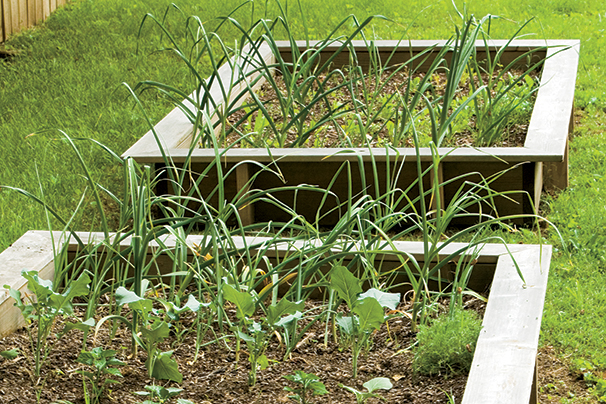Raising the Roots With Raised Beds

During the winter, many home gardeners are already planning their first steps come spring. But before you start ordering seeds, consider the benefits of building a raised bed.
Yes, they require more work to construct, but you will be happy each time you don’t have to bend over quite so far with your sore back. In addition to the physical benefits, you get to fill the frames with high-quality topsoil, often far superior to the dirt under your grass. What’s more, raised beds help to keep the grass from invading your crops. They also assist in controlling weeds and pests, often increase the yields of your produce and even extend the growing season due to a warmer soil temperature.
Getting Started
Raised beds should be at least 12 inches tall to allow room for the roots. However, they should be no more than four feet wide so you can easily reach the middle from both sides. If you construct multiple beds, remember to leave enough space between them to easily maneuver a wheelbarrow, run your lawn mower or use a wheelchair.
Building the Bed
When choosing materials to build your raised beds, select rot-resistant lumber such as cedar or redwood. Alternately, use brick, stone or concrete, and you will never need to rebuild. My friends made theirs out of cinder blocks two blocks high and five blocks long. It was easy to construct, sturdy, inexpensive and fit their needs. They can sit on the edges to work the soil or harvest.
Filling the Garden
If you have moles and voles, place chicken wire or a similar material as a base in the middle of the frame. This will prevent the critters from being able to dig upward into your garden. (If you don’t have this problem, skip this step.)
Lay down a thick layer of brown corrugated cardboard or newspaper right over the grass (or chicken wire). The paper will decompose, providing food for the worms.
Next, if desired, add any yard waste you would normally compost, such as shrub and grass clippings, kitchen scraps and the like. If you add a lot of woody material, also add a bag of blood meal to balance out the nitrogen.
Finally, add compost to fill to the top. Some folks use black dirt or even garden soil. The soil will need to go about a foot deep, as most roots exist in the top 12 inches. Your soil will be loose because you never walk on it, and well drained due to the raised bed – so don’t forget to water thoroughly.
Building a raised bed is work now, but all the benefits are worth it. You will be able to garden well into your golden years.













 My Indiana Home is produced for Indiana Farm Bureau members. Our mission is to connect you with the food you eat, the Indiana farmers who grow it and a rural lifestyle that is uniquely Hoosier.
My Indiana Home is produced for Indiana Farm Bureau members. Our mission is to connect you with the food you eat, the Indiana farmers who grow it and a rural lifestyle that is uniquely Hoosier.
Leave a Comment